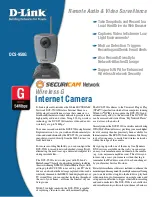
Item
Description
Bit rate
Range: [300...115200]. The speed of the digital transmission, that
is - the amount of information transferred/processed per unit of
time. Enables you to set a bit rate other than the presets in the
UART settings section.
UART gap timeout
Range: [0...255] data words. Will have the next packet sent when
the line has remained idle for longer than the timeout.
UART max. latency
Range: [0...255] data words. The maximum latency of the data
channel is controlled by forcing a packet to be sent when the first
data word of the packet was received longer ago than the number
of word times set here.
Note on Data Transfer Optimisation: A 'word time' is the transmit time for one data
word. The amount of time one data word takes to travel on the line is determined by bit rate
and word length. Using the UART gap timeout and UART max. latency variables you can
tailor the data channel for your specific protocol. A delay < 5 milliseconds is possible with
minimal settings.
One or more data words are bundled in packets. The packaging process influences the
performance of the UART mode. At high bit rates, say 115 kbit/s, it may be desirable to
adjust some of the low-level UART settings to prevent high CPU loads. At such speeds, a
large number of small network packets might increase CPU load by 15%.
The process can be optimised using the RS-4xx settings in the Advanced Settings section.
Packets can be sent depending on the configuration of the UART gap timeout and UART max.
latency variables. These can be set such that fewer but larger packets are sent, making the
stream simpler to handle, at a considerably lower CPU load. Configuring these settings is
often a trade-off between latency (due to packaging) and payload efficiency. In other words,
many network packets with a small payload (low latency) versus fewer packets with a large
payload (higher latency).
At lower bit rates, a need for smoother PTZ may also require modification of these low
‑
level
settings. Note that this depends on the application. For example, PTZ commands must be
sent frequently, but require few words. Latency can be minimised by proper fine-tuning of
the UART gap timeout and UART max. latency variables.
13.5.2
Transmitter #
Data RS-422/485 > Advanced > Transmitter 1
Data RS-422/485
111
















































